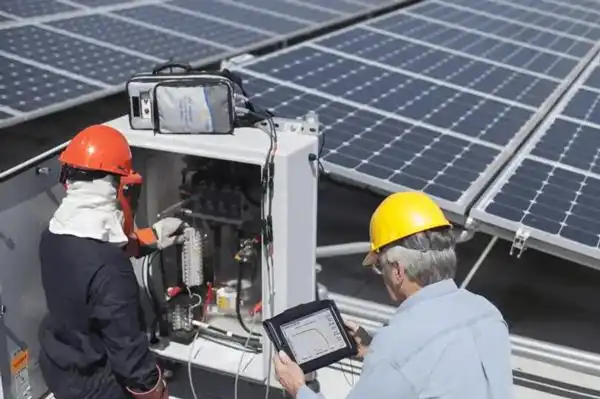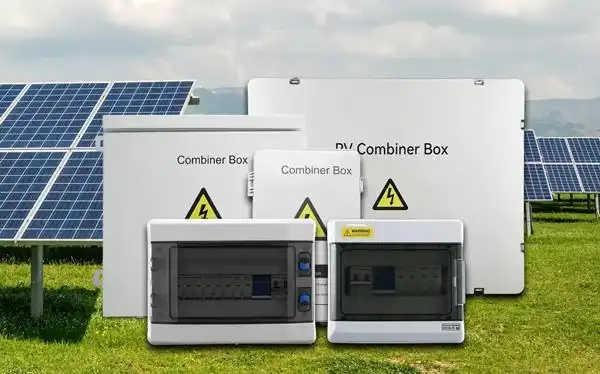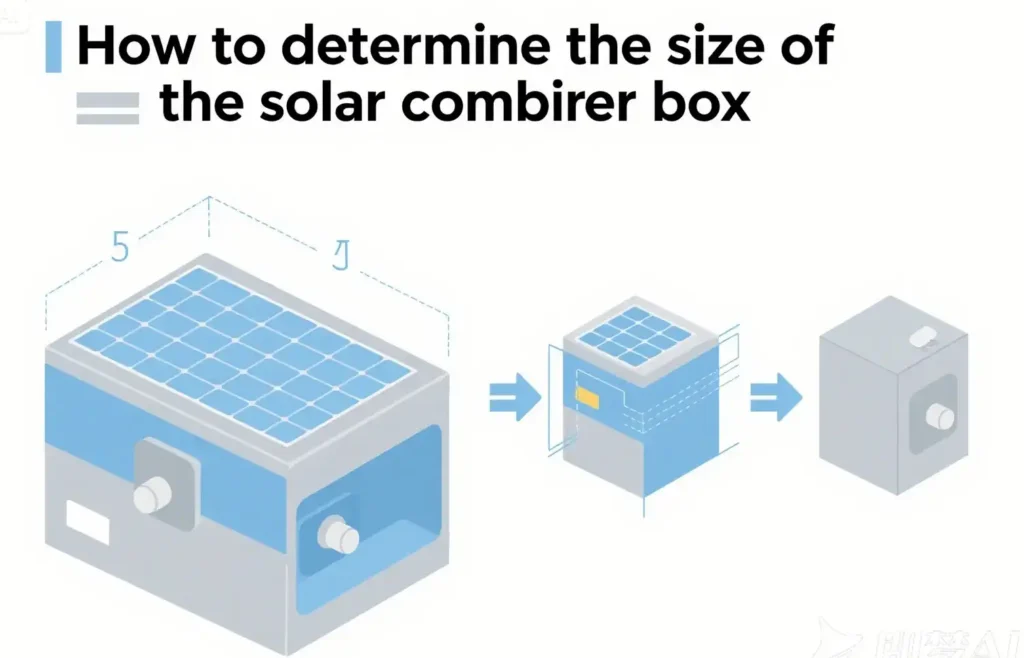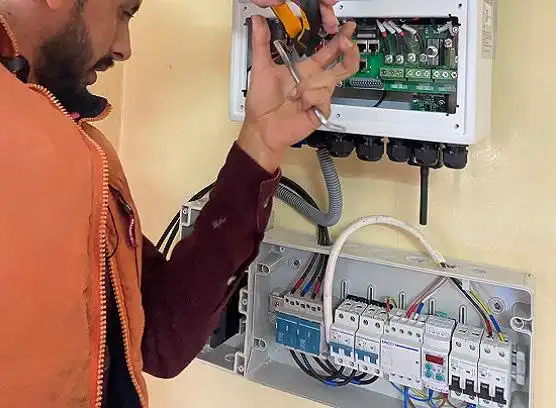To determine the size of a solar combiner box, check key factors. These include how many inputs you need and voltage limits. You also need to know the current your system uses. These details help keep your system safe and working well. The right combiner box organizes solar panel wires and prevents damage. Planning for future growth lets your system expand easily later. Doing this keeps your solar setup strong and ready to grow.
Key Takeaways
-
Count how many solar panel strings you have. Make sure the combiner box has enough slots for them.
-
Find out the highest current and voltage your system makes. Add a safety buffer by multiplying the current by 1.25.
-
Think about adding more panels later. Pick a combiner box with extra slots and enough capacity for future growth.
-
Choose a strong, certified combiner box for safety and good performance. Check for features like protection from too much current and weatherproofing.
-
Use online tools or ask experts to pick the right combiner box size and avoid mistakes.
What is a solar combiner box?
Definition and purpose
A solar combiner box is an important part of a solar system. It combines power from many solar panels into one circuit. This makes wiring easier and helps the system work better. Think of it as a meeting point for all panel wires before they go to the inverter.
Inside the combiner box, there are key parts. These include DC breakers, fuses, surge protectors, disconnect switches, and busbars. Each part has a job. DC breakers stop problems from too much voltage. Fuses protect each panel string by cutting power during faults. Surge protectors guard against energy spikes by grounding extra power. Disconnect switches let you turn off power for repairs or emergencies. Busbars gather all circuits and send them to the main breaker.
Importance in solar power systems
A solar combiner box keeps your solar system safe and efficient. It organizes wires and lowers the chance of electrical problems. It also helps your system meet safety rules and standards. Without the right combiner box, your system might overheat, short out, or stop working.
Combiner boxes also make fixing problems easier. They give you one place to check and repair your solar setup. If you want to add more panels later, a good combiner box can handle it. This makes your solar system ready to grow in the future.
Factors to determine the size of a solar combiner box

Number of solar panel strings
The number of solar panel strings is very important. A string is a group of solar panels connected together. The combiner box must fit all the strings in your system. For example, if you have six strings, the box needs six input spots.
To find the right number of strings, consider key factors. These include open circuit voltage (Voc), short circuit current (Isc), and temperature changes. The table below shows common methods used for these calculations:
|
Calculation Method |
Description |
|---|---|
|
Open Circuit Voltage (Voc) |
Highest voltage when the panel has no load. |
|
Short Circuit Current (Isc) |
Current when the panel’s voltage is zero. |
|
Temperature Adjustments |
Adjust for the lowest and highest temperatures expected. |
|
Inverter Voltage Range |
Make sure strings match the inverter’s voltage limits. |
By learning these methods, you can pick the right combiner box for your system.
Voltage and current ratings
Voltage and current ratings are key for sizing a combiner box. The box must handle the highest voltage and current from your system. First, calculate the maximum current for one string. Then, multiply it by the total number of strings to get the total current.
For safety, multiply the total current by 1.25. This extra amount helps the box handle sudden power changes. Next, check the maximum system voltage. This voltage must not go over the box’s voltage limit. Always review your solar panel and inverter details to ensure they match.
Safety margins and code compliance
Safety margins and following codes are crucial for a good system. A well-sized combiner box prevents overheating and electrical issues. For example, the National Electrical Code (NEC) requires overcurrent protection devices (OCPDs). These devices stop too much current from damaging your system.
Your combiner box must also meet local electrical rules. This keeps your system safe and avoids legal problems. Always ask an expert or check NEC rules to ensure your combiner box follows all requirements.
Future expansion considerations
When picking a solar combiner box, think about future growth. Solar systems often expand as energy needs increase over time. Planning ahead now can save both time and money later. A properly sized combiner box lets you add panels without big changes.
First, guess how many panels you might add later. If you plan to expand, pick a box with extra input slots. For example, if you use six strings now but might add two more, choose a box with at least eight slots. This way, you won’t need a new box when expanding.
Also, check the voltage and current capacity of the combiner box. Adding panels increases the total current and maybe the voltage too. Make sure the box can handle these higher levels. Look at the box’s specifications to confirm it fits your future needs.
Another key part is the overcurrent protection devices (OCPDs) inside the box. These devices stop electrical problems from damaging your system. If you plan to grow, ensure the OCPDs can handle more current. Some boxes let you upgrade or add OCPDs, making them better for future growth.
Lastly, think about where the combiner box will go. Expansion might need a bigger box or more equipment. Pick a spot that can fit these changes. This makes upgrading your solar system easier later.
By planning for growth, you avoid costly upgrades and keep your system working well. A good solar combiner box supports your setup now and prepares it for the future.
Step-by-step guide to size a solar combiner box

Find the maximum current for each string
First, figure out the highest current for each solar string. A string is a group of solar panels connected in a line. The current depends on the panels’ details. Check the short circuit current (Isc) on the panel’s datasheet. This number shows the most current the panel can make in perfect conditions.
For example, if one panel’s Isc is 9 amps and the string has three panels, the current is still 9 amps. In a series connection, the current stays the same. Do this for all the strings in your system. Write down each string’s current for the next step.
Tip: Always use the highest Isc value to plan for peak conditions.
Add total current and multiply by 1.25 for safety
Next, add up the current from all strings to get the total. For instance, if you have four strings, each with 9 amps, the total is 36 amps (9 x 4).
Now, multiply this total by 1.25 for safety. This extra amount helps the box handle sudden power changes. Using the example, 36 amps multiplied by 1.25 equals 45 amps. This is the smallest box size your system needs to stay safe.
Note: The 1.25 multiplier follows safety rules like the National Electrical Code (NEC). It stops overheating and protects your system.
Figure out the maximum system voltage
Finally, calculate the highest voltage your system can make. In a series, the voltage adds up. Multiply the open circuit voltage (Voc) of one panel by the number of panels in the string. For example, if each panel’s Voc is 40 volts and the string has three panels, the voltage is 120 volts (40 x 3).
Cold weather can raise voltage, so adjust for temperature changes. Check the temperature coefficient on the datasheet and update the Voc. This gives you the system’s maximum voltage.
Compare this number to the combiner box’s voltage rating. The box must handle the system’s voltage without going over its limit. If the system’s voltage is too high, pick a box with a higher voltage rating.
Reminder: Double-check your math and make sure the combiner box fits both the current and voltage needs of your system.
Account for overcurrent protection device (OCPD) ratings
Overcurrent protection devices (OCPDs) are vital for keeping your solar system safe. These devices, like fuses or circuit breakers, stop damage from too much current. They protect both the solar combiner box and the entire system. When choosing a combiner box, check the OCPD ratings to match your system’s needs.
Why OCPD Ratings Matter
OCPD ratings show the highest current the device can handle. If the current goes over this limit, the OCPD will trip or blow. This stops overheating, fires, or damage to your solar setup. Picking the right OCPD rating keeps your system safe during normal and peak times.
For example, if your solar panels produce 40 amps, the OCPD should be rated slightly higher. But it must not exceed what your wires and parts can handle. This balance is key to keeping your system safe.
Steps to Select the Right OCPD Rating
-
Add Up the Total Current: Combine the current from all solar panel strings. Use the short circuit current (Isc) of each string for accurate numbers.
-
Use a Safety Factor: Multiply the total current by 1.25 for safety. This helps the OCPD handle sudden surges without tripping too soon.
-
Check the Wiring Capacity: Make sure the OCPD rating matches your wire’s capacity. The OCPD should not allow more current than the wires can safely carry.
-
Look at the Combiner Box Design: Some boxes have built-in OCPDs, while others let you add your own. Ensure the OCPD fits your combiner box and solar system specs.
Tips for Choosing the Right OCPD
-
Follow Electrical Rules: Follow codes like the National Electrical Code (NEC) for safety. These rules guide OCPD sizing based on voltage and current.
-
Plan for Growth: If you might add more panels later, pick an OCPD that can handle the extra current. This saves you from replacing it later.
-
Ask an Expert: If you’re unsure, talk to a licensed electrician or solar installer. They can help you choose the best OCPD for your system.
By checking OCPD ratings carefully, you protect your combiner box and keep your solar system safe and efficient for years to come.
Common mistakes when sizing a pv combiner box
Forgetting future growth
A big mistake is not planning for future needs. Solar systems often grow as energy use increases. If your combiner box only fits your current system, problems may arise later. For example, adding panels might need a bigger box or a full replacement. This can cost extra money and take more time.
To prevent this, always plan ahead. Guess how many panels you might add later. Pick a combiner box with extra slots and higher capacity. This way, your system can grow without big changes. Planning ahead saves both time and money.
Misjudging voltage or current needs
Another mistake is guessing wrong on voltage or current levels. A combiner box must safely handle the highest voltage and current. If you guess too low, the box might overheat or break. This can harm your solar system and cause safety issues.
Always check your solar panel and inverter details. Add up the short circuit current (Isc) of all strings to find total current. Multiply this by 1.25 for safety. For voltage, use the open circuit voltage (Voc) and adjust for temperature changes. Double-check these numbers to match the box to your system.
Ignoring weather and surroundings
Weather and surroundings affect how a combiner box works. Ignoring these can cause damage or poor performance. For example, heat can overheat parts, and moisture can cause rust. Dust and dirt can also lower the box’s efficiency.
Choose a box made for your environment. Look for weatherproof and UV-resistant materials. In hot areas, pick a box with good airflow. For wet places, choose one with a high IP rating to block water and dust. Thinking about the environment helps your box last longer and work better.
Picking uncertified or poor-quality boxes
Using uncertified or cheap boxes can harm your solar system. These boxes might not meet safety rules, putting your system in danger. They often skip proper testing, so they may not handle your system’s voltage or current. Always check for certifications like UL or IEC when choosing a pv combiner box. Certified boxes follow industry rules and work safely in your setup.
Low-quality boxes are made with cheap materials. Bad construction can cause overheating, rust, or even fires. For instance, a poorly built box might lack good insulation. This could lead to short circuits, damaging your panels and inverter. High-quality boxes use strong materials that resist heat, water, and sunlight. These features protect your system and make it last longer.
Another problem with uncertified boxes is poor performance. They might fail during hot weather or sudden power spikes. A good pv combiner box should handle these challenges without breaking. If the box fails, your whole solar system might stop working, costing you money to fix.
Choosing a certified, high-quality box keeps your system safe and efficient. Look for boxes with features like surge protection and overcurrent devices. These features guard your system against unexpected problems. Spending more on a good box now saves you money and stress later.
Tip: Buy from trusted brands or sellers. Read reviews and ask experts for advice. A reliable pv combiner box is key to your solar system, so choose carefully.
Practical tips for picking the right solar combiner box
Try online tools or ask an expert
Online tools can make choosing a solar combiner box easier. Many websites have calculators to find the right size for your system. You’ll need to enter details like panel strings, voltage, and current. These tools quickly suggest a box that fits your setup.
If online tools seem confusing, talk to a professional. Solar experts know how to help you pick the best box. They can check your system’s needs and suggest safe, efficient options. Experts also help you avoid mistakes, like picking the wrong voltage or skipping future growth plans.
Focus on safety and strength
Safety and strength are key when picking a solar combiner box. A good box keeps your system safe from electrical problems. Look for certifications like UL or IEC to ensure it meets safety rules.
Strong materials are just as important. If the box will be outside, choose one that resists weather. Features like waterproofing and UV protection make it last longer. A strong box saves money on repairs and keeps your system working well.
Match it to your solar system
The combiner box must fit your solar system’s needs. Check your panels’ and inverter’s voltage and current ratings. The box should handle the highest levels safely without breaking. This makes installation easier and prevents problems later.
Also, check how many input slots the box has. It should fit all your panel strings and leave room for future upgrades. A well-matched box makes wiring simpler and helps your solar system work better overall.
To figure out the size of your solar combiner box, think about important details. These include how many inputs you need and the voltage and current levels. Plan ahead so your system can grow easily in the future. Stay safe by avoiding mistakes and picking good-quality parts. The right combiner box keeps your solar setup working well and safely. By doing the math and planning carefully, you can choose the best combiner box for your system.
FAQ
What does a solar combiner box do?
A solar combiner box connects power from several solar panel groups. It makes wiring easier, keeps the system safe, and prevents electrical problems. It also helps your solar system follow safety rules and work well.
How can you figure out the size of a solar combiner box?
To find the size, count the panel groups, total current, and highest voltage. Multiply the total current by 1.25 for safety. Make sure the box can handle these numbers and has room for future panels.
Why is overcurrent protection needed in a combiner box?
Overcurrent protection devices (OCPDs) stop damage from too much current. They protect your panels, wires, and inverter from overheating or short circuits. Correctly rated OCPDs keep your system safe during normal and high-power times.
Can you use a solar combiner box outside?
Yes, many solar combiner boxes are made for outdoor use. Choose boxes with weatherproof and sun-resistant materials. Check the IP rating to ensure it can handle rain, dust, and extreme weather.
What if I pick the wrong size combiner box?
Picking the wrong size can cause overheating, electrical issues, or poor performance. A box that’s too small may not handle the power, while a big one could waste money. The right size keeps your system safe and working well.
The following information may be of interest to you
How to choose the size of the distribution board
Fire safety guidelines for solar combiner boxes
Why Your Solar Energy Setup Requires a Combiner Box
The difference between an AC combiner box and a DC combiner box




